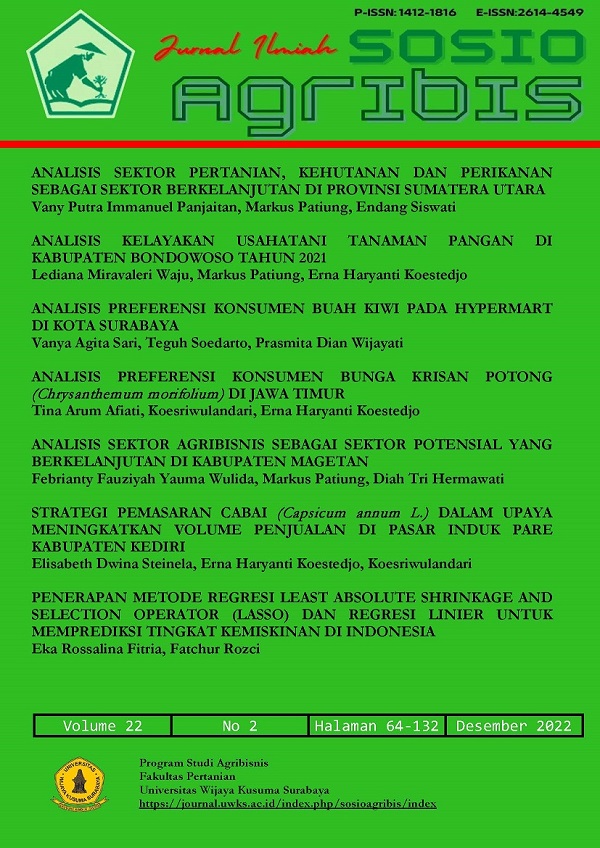Penerapan Metode Regresi Least Absolute Shrinkage and Selection Operator (LASSO) dan Regresi Linier untuk Memprediksi Tingkat Kemiskinan di Indonesia
DOI:
https://doi.org/10.30742/jisa22220222620Abstract
Poverty is defined as a situation where a person or family is unable to meet the basic needs for survival, such as clothing, food, shelter, and education. This study aims to compare the accuracy of the Least Absolute Shrinkage and Selection Operator (Lasso) regression method and linear regression in predicting poverty levels in Indonesia and to choose the best model from the two methods used. The results of this study indicate that of the two algorithms used, namely the linear regression algorithm and Lasso regression, the algorithm that has a higher level of accuracy for predicting poverty rates in each province in Indonesia is the linear regression algorithm because it has a lower MSE value and has the value of R^2 is closer to 1 than the Lasso regression algorithm. In addition, the results of the analysis show that the variables that have the highest influence on poverty rates in provinces in Indonesia are education, as well as the Human Development Index (IPM).
Keywords: Poverty Rate Prediction, Lasso Regression, Linear Regression
Downloads
Additional Files
Published
Issue
Section
License
- The author retains copyright and grants the journal the right of first publication with the work being simultaneously licensed under the Creative Commons Attribution License which allows others to share the work with acknowledgment of the work's authorship and initial publication in this journal.
- Authors may make additional separate contractual arrangements for the non-exclusive distribution of the published journal version of the work (for example, posting it to an institutional repository or publishing it in a book), with acknowledgment of its initial publication in this journal.
- Authors are permitted and encouraged to post their work online (for example, in institutional repositories or on their websites) before and during the submission process, as it can result in a productive exchange, as well as earlier and larger citations of published work (See The Influence Open Access).

